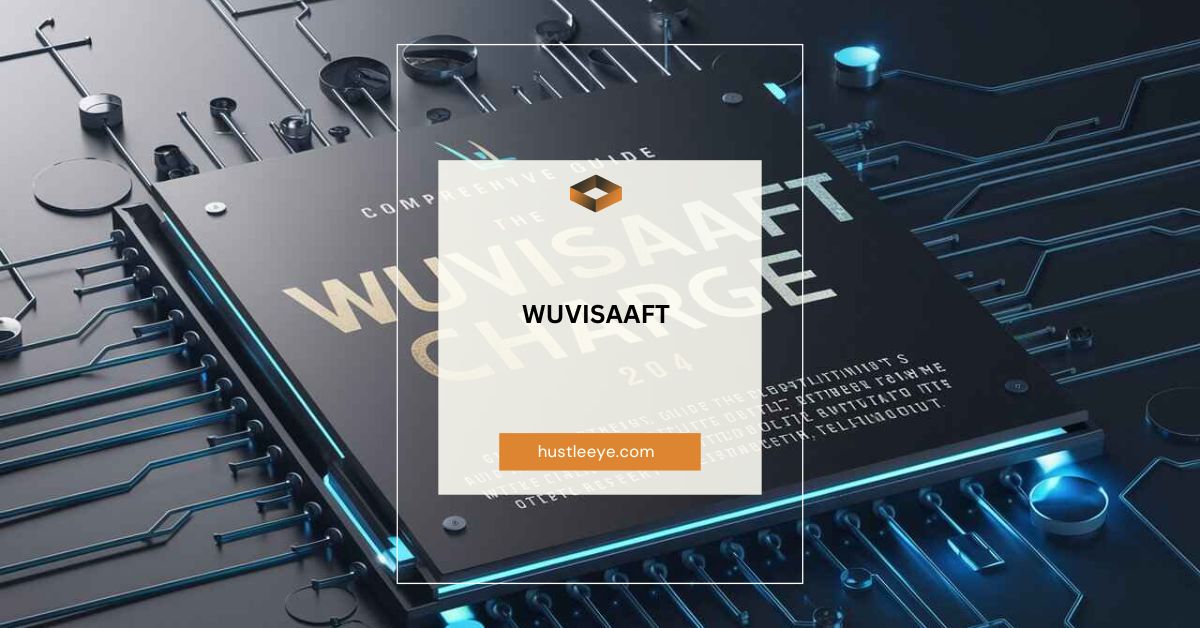When checking your bank statement, have you ever stumbled upon a mysterious charge labeled “WUVISAAFT”? If so, you’re not alone. Many people across the United States have encountered this perplexing acronym and wondered what it means. In this article, we’ll demystify WUVISAAFT, explain its origins, and guide you on how to manage this charge effectively. We’ll provide comprehensive information, insights, and practical advice to help you understand and deal with WUVISAAFT.
Table of Contents
What Is WUVISAAFT?
WUVISAAFT stands for Western Union Visa Account Funding Transaction. It represents a transaction processed through the Visa network, facilitated by Western Union, a well-known financial services company specializing in money transfers. The charge typically appears on your bank statement when you use Western Union’s services to transfer money, pay bills, or reload a prepaid card using a Visa card.
Read More: XM9viesForYou: A Comprehensive Guide to the Premier Online Video Streaming Platform
Why Does WUVISAAFT Appear on Your Bank Statement?
WUVISAAFT appears on your bank statement for several reasons:
- Money Transfers: If you’ve sent money through Western Union using your Visa card, the transaction will be listed as WUVISAAFT.
- Bill Payments: Paying bills through Western Union can result in a WUVISAAFT charge on your statement.
- Prepaid Card Reloads: Reloading a prepaid card via Western Union using a Visa card triggers this charge.
Understanding the reasons behind this charge is crucial for ensuring that your financial activities are legitimate and authorized.
The Components of WUVISAAFT:
To fully grasp the WUVISAAFT charge, let’s break down its components:
- WU (Western Union): Western Union is a global leader in money transfer services. It allows people to send money across the world quickly and securely.
- VISA: This represents the use of a Visa credit or debit card in the transaction. Visa cards are widely accepted and used for various financial transactions.
- AFT (Account Funding Transaction): AFT refers to the process of transferring funds from one account to another. In the case of WUVISAAFT, it involves moving money using Western Union’s services via a Visa card.
Read More: What Is Google LLC on My Mac? A Comprehensive Guide
Common Scenarios Where WUVISAAFT Might Appear:
Here are some typical scenarios where you might see a WUVISAAFT charge:
- Paying a Bill: Whether it’s a utility bill, rent, or a loan payment, if you’ve used Western Union to pay it, WUVISAAFT will appear on your statement.
- Sending Money Overseas: Western Union is a popular choice for sending money internationally. Using a Visa card for this service will result in a WUVISAAFT charge.
- Settling Debts: If you’ve borrowed money and repaid it using Western Union, the transaction will be marked as WUVISAAFT.
- Reloading a Prepaid Card: Transferring funds to a prepaid card via Western Union is another scenario where this charge might appear.
How WUVISAAFT Charges Work:
When you initiate a transaction through Western Union using a Visa card, the funds are transferred from your bank account to the recipient. This process involves several steps:
- Initiation: You start by selecting the service—whether it’s money transfer, bill payment, or prepaid card reload.
- Authorization: The transaction is authorized by your bank, ensuring that you have sufficient funds and that the charge is legitimate.
- Processing: The transaction is processed through the Visa network, and Western Union facilitates the transfer.
- Completion: The recipient receives the funds, and the charge appears on your bank statement as WUVISAAFT.
Read More: Get Thriftyevents.net Blog: A Comprehensive Guide to Budget-Friendly Event Planning
How to Verify the Legitimacy of WUVISAAFT Charges:
It’s essential to verify that any WUVISAAFT charge on your bank statement is legitimate. Here’s how you can do it:
1. Review Recent Transactions:
Go through your recent financial activities to see if you’ve used Western Union for any purpose. Compare the amount listed as WUVISAAFT with your records to ensure it matches a transaction you authorized.
2. Contact Western Union:
If you’re unsure about the charge, contact Western Union’s customer service. They can provide detailed information about the transaction, including the recipient and the purpose of the transfer. This step is crucial for verifying the authenticity of the charge.
3. Reach Out to Your Bank:
If you still have doubts after contacting Western Union, reach out to your bank. They can help confirm if the charge was authorized and guide you on the next steps if you suspect fraud.
Read More: Elizabeth Bowes Gregory: A Comprehensive Insight into the Life of a Celebrity Daughter
Preventing Unwanted WUVISAAFT Charges:
To avoid unexpected or unauthorized WUVISAAFT charges, follow these tips:
1. Monitor Your Bank Statements Regularly:
Regularly reviewing your bank and credit card statements allows you to identify unfamiliar charges quickly. Early detection is key to preventing fraudulent activities.
2. Use Secure Channels:
Ensure that you’re using secure and trusted methods when transferring money or paying bills online. Avoid using public Wi-Fi networks for financial transactions to reduce the risk of unauthorized access.
3. Set Up Alerts:
Most banks offer transaction alerts that notify you of any charges in real-time. Setting up these alerts ensures that you’re immediately aware of any WUVISAAFT charges, allowing you to take prompt action if necessary.
Read More: The Life and Legacy of Frank Csorba in Lynchburg, VA
What to Do If You Encounter an Unrecognized WUVISAAFT Charge:
Finding an unrecognized WUVISAAFT charge on your bank statement can be alarming. Here’s what you should do:
Step 1: Review Your Transactions:
Double-check your recent transactions to ensure that you didn’t accidentally forget about a Western Union service you used. It’s easy to overlook transactions, especially if they’re recurring or automatic.
Step 2: Contact Western Union:
If the charge still doesn’t ring a bell, contact Western Union for more details. They can provide transaction-specific information that might help you recall the charge or identify potential issues.
Step 3: Notify Your Bank:
If you’re certain that the charge is unauthorized, contact your bank immediately. They can initiate a dispute process, which could result in the reversal of the charge if it’s found to be fraudulent.
Step 4: Monitor Your Account:
Keep a close eye on your account to ensure no further unauthorized transactions occur. Monitoring your account regularly helps in quickly spotting and addressing any suspicious activities.
Read More: Tragedy at UConn: A Deep Dive into the Incident at the Parking Garage
Understanding Variations of WUVISAAFT Charges:
WUVISAAFT charges can appear in different formats on your bank statement. Understanding these variations can help you better identify and verify them:
- WUVISAAFT 800-325-6000: This variation includes Western Union’s customer service number, indicating that the transaction was facilitated by their services.
- WUVISAAFT CO: The “CO” stands for Colorado, where Western Union’s headquarters is located.
- WUVISAAFT 800-325-6000 COUS: This variation combines the customer service number with the location of Western Union’s headquarters (CO for Colorado and US for the United States).
- WUVISAAFT 800-325-6000 CO 80112: Here, “80112” is the zip code for Englewood, Colorado, where Western Union’s headquarters is based.
- PYMT SENT WUVISAAFT 800-325-6000 CO: This indicates that a payment has been sent via Western Union, with the customer service number and headquarters location included.
Read More: Exploring NHentai.NEF: A Comprehensive Guide to the Popular Hentai Archive
Why Do These Variations Exist?
These variations exist because different financial institutions might present the same transaction differently on your statement. Additionally, some variations include additional information like customer service numbers or location details, making it easier for you to verify the charge.
How to Dispute a WUVISAAFT Charge:
If you believe that a WUVISAAFT charge is incorrect or unauthorized, you can dispute it. Here’s how:
1. Contact Your Bank:
Start by contacting your bank and explaining the situation. Provide any supporting documents or transaction records that can help your case. Your bank will guide you through the dispute process, which typically involves investigating the charge and, if necessary, reversing it.
2. File a Complaint with Western Union:
You can also file a complaint with Western Union directly. They may be able to resolve the issue by providing more information or reversing the charge if it’s found to be incorrect.
3. Monitor the Dispute Process:
Keep track of the dispute process by staying in touch with your bank and Western Union. Make sure to follow up if you don’t hear back within the expected time frame.
Read More: Seamus Kirby Newport RI Obituary: A Life Celebrated and Remembered
Tips for Safe Money Transfers and Online Payments:
To ensure your financial safety and avoid unexpected charges like WUVISAAFT, consider these tips:
1. Use Reputable Services:
Always use reputable money transfer and payment services like Western Union. These services have robust security measures in place to protect your transactions.
2. Avoid Sharing Sensitive Information:
Never share your card details, PIN, or passwords with anyone. Be cautious of phishing scams and fraudulent websites that might attempt to steal your information.
3. Keep Your Software Updated:
Ensure that your computer, smartphone, and any financial apps are updated to the latest version. Updates often include security patches that protect against new threats.
4. Enable Two-Factor Authentication:
Whenever possible, enable two-factor authentication (2FA) on your financial accounts. This adds an extra layer of security by requiring a second form of verification, such as a text message code, in addition to your password.
Read More: MarineNet: Revolutionizing the Marine and Inland Waterways Industry
Frequently Asked Questions (FAQs) About WUVISAAFT:
1. What does WUVISAAFT stand for?
WUVISAAFT stands for Western Union Visa Account Funding Transaction. It represents a transaction processed through the Visa network and facilitated by Western Union.
2. Why did I receive a WUVISAAFT charge on my bank statement?
You received a WUVISAAFT charge because you used a Visa card to perform a transaction through Western Union, such as sending money, paying a bill, or reloading a prepaid card.
3. Is a WUVISAAFT charge safe and legitimate?
Yes, a WUVISAAFT charge is generally safe and legitimate, as long as you recognize the transaction. If you don’t recall making the transaction, contact Western Union and your bank to verify its authenticity.
4. How can I dispute an unauthorized WUVISAAFT charge?
To dispute an unauthorized WUVISAAFT charge, contact your bank to start the dispute process. You can also file a complaint with Western Union for further investigation.
5. What should I do if I don’t recognize a WUVISAAFT charge?
If you don’t recognize a WUVISAAFT charge, review your recent transactions to see if you’ve used Western Union’s services. If you still can’t identify the charge, contact Western Union and your bank for assistance.
6. Can WUVISAAFT charges appear in different formats on my bank statement?
Yes, WUVISAAFT charges can appear in various formats, such as including customer service numbers or location details. These variations help provide more context about the transaction.
7. How can I prevent unauthorized WUVISAAFT charges?
To prevent unauthorized WUVISAAFT charges, monitor your bank statements regularly, use secure payment methods, set up transaction alerts, and avoid sharing your financial information with others.
8. What should I do if I suspect fraud related to a WUVISAAFT charge?
If you suspect fraud related to a WUVISAAFT charge, contact your bank immediately to report the issue and protect your account. You should also monitor your account closely for any further suspicious activity.
9. Are there any fees associated with WUVISAAFT charges?
Fees may be associated with the services provided by Western Union, such as money transfers or bill payments. These fees should be disclosed at the time of the transaction.
10. Can I avoid WUVISAAFT charges by using other payment methods?
Yes, you can avoid WUVISAAFT charges by using alternative payment methods that don’t involve Western Union or Visa, such as direct bank transfers or other payment platforms.
Conclusion:
The WUVISAAFT charge, though initially confusing, is a straightforward indicator of transactions processed through Western Union using a Visa card. Whether you’re sending money, paying bills, or reloading a prepaid card, understanding this charge helps you manage your finances more effectively. By monitoring your bank statements, verifying charges, and taking steps to prevent unauthorized transactions, you can ensure that your financial activities remain secure and under your control. Always remember that staying informed and vigilant is key to protecting your hard-earned money.


